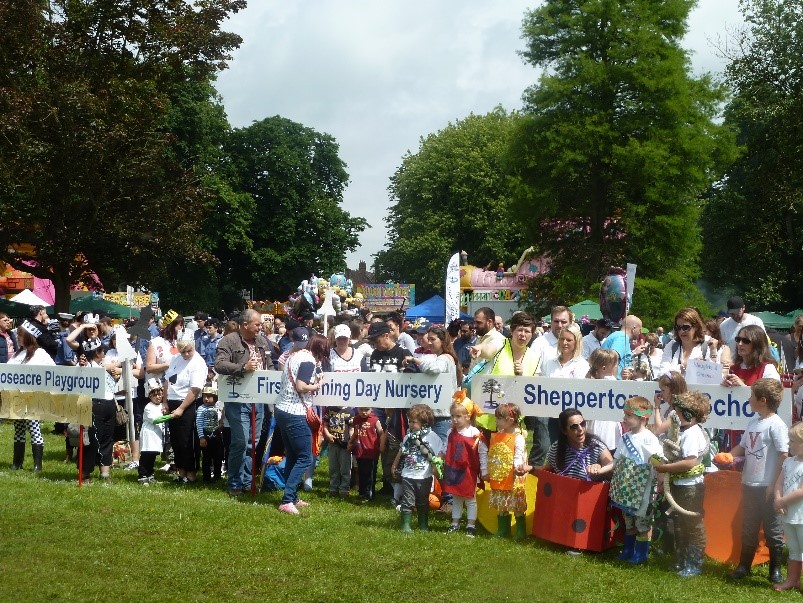We have all had to face the fact that our favourite events are not able to take place this year, physically at least. For those of us who live in or near Shepperton, the loss of our much-loved and incredibly popular Village Fair, due to be held this month, is a huge disappointment. Every year on the second Saturday in June, approximately 5000 people congregate at Manor Park to wander round the stalls, watch the parade and arena displays, buy something from the craft tent, or watch the raft race from the riverbank. Usually the Sunbury and Shepperton Local History Society have a display in the craft tent, where we are pleased to share our photos and knowledge of the history of the area with our community, but instead of this, I thought I would look at the history of the venue itself, Manor Park.
If you look at an old Ordnance Survey map of the area, you will see this piece of land named as War Closewith a note Human bones, spears &c foundThe implication is that a battle had been fought here at some time in the past. However, we now know that there were extensive Saxon cemeteries in the area, and it seems more likely that these were the buried remains of some of Sheppertons earliest inhabitants. The grave goods, i.e. weapons, suggest a pagan burial, dating from before the widespread conversion to Christianity from the 9th century onwards. After this, grave goods became much less common and burials were more likely to take place in a cemetery associated with a church (assuming the Saxon church was near the site of the present building).
For many centuries the land was part of the grounds of the Manor House, although this is pretty well invisible from anywhere in the park but the riverside. The long sweep of riverside lawn which is today partly in the Manor House grounds, and partly in the Park, was known as Mrs Lindsays Lawnafter the wife of William Schaw Lindsay, Lord of the Manor of Shepperton from 1856-1877, and a great improver of the village, bringing the railway being perhaps the most lasting of his achievements. The lawn was said to be the longest on the Thames.
Lindsay was also one of the prime movers behind the Enclosure of the common land of the village. He acquired a strip which ran along the side of the present Russell Road and incorporated it into his grounds, diverting the stream which was the original boundary to run alongside the road. When it rains heavily you can still see the water collect in the old course of the stream, running across that side of the Park. Flooding was such a problem in the area that the bottom part of the enclosing fence was made to hinge upwards, to avoid holding the flood waters back.
In 1967, the Manor House was sold by the Lindsay family, and although the Manor House remained in private hands, much of the grounds and the adjacent cricket pitch (used since 1929 by Shepperton Cricket Club) were acquired by Surrey County Council for public recreational use.
The first Village Fair was held at the new Manor Park in 1973, organised by the Chamber of Commerce. Subsequently run for a while by Rotary, it has for many years been organised by an independent team of volunteers. See you next year at the fair!
We are adding new online exhibitions, and hopefully recorded talks, to the Societys web-site. Please check www.sslhs.org.uk for updates.

